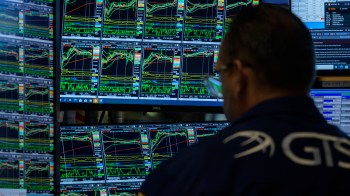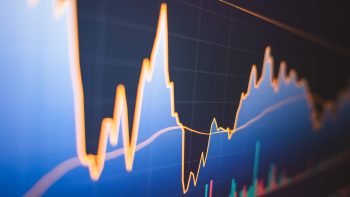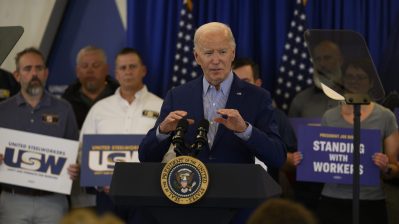Like a linebacker going for a tackle, we’re trying wrap our arms around the GDP number out today. The government said the economy grew at a 3.5% annual pace in the third quarter. That’s after four quarters of shrinking. The question is: Is this for real or are we about to be deked out of our cleats?
First of all, what does GDP tell us? It gives us a basic understanding of the economy’s health. How much are people buying at the store? How much is the government spending? How much investment are businesses making? Exports? Imports? You add all this stuff up and see whether it’s a positive or a negative number.
It clearly doesn’t tell us everything about the economy. And the final number can certainly be influenced by one-time spikes or drops. In the third quarter, cash-for-clunkers is a good example.
We’ll have a further explanation tonight on Marketplace. In the meantime, here’s a roundup of analysis. The Wall Street Journal has a nice summary of reactions from economists:
All things considered, this was a very good report, and suggests that the U.S. economy has finally shaken off the shackles of the deep economic recession and is beginning the economic recovery process. However, with the significant fiscal and monetary stimulus providing the main impetus for this sharp rebound, we expect GDP growth in the coming quarters to be less robust as their impact wanes, though we do expected the recovery process to remain intact. – Millan L. B. Mulraine, TD Securities
We expect economic growth to continue at about the same pace for the next few quarters, as pent up investment demand is released, inventories are restocked and the boost from the fiscal stimulus continues. Our concern, however, is that all those positive factors will fade badly in the second half of next year. If consumption growth remains unusually lacklustre, then GDP growth would slow to a crawl again. – Paul Ashworth, Capital Economics
Big contributors were consumer spending on autos — cash for clunkers — federal government, inventories and housing — tax credit… Core issue: how much of this is sustainable without Fed programs? – John Silvia, Wells Fargo
We need many quarters of GDP running at this pace (or faster) to make significant inroads into reducing unemployment. – RDQ Economics
On that note, unemployment has generally been considered a lagging indicator. First comes the spending and investment, then come the jobs. But is it possible that things are different this time? That until the jobs come back, we won’t see the spending or investment? Along those lines, The Market Ticker points to the drop-off in personal income reflected in the GDP report:
Disposable personal income decreased $20.4 billion (0.7 percent) in the third quarter, in contrast to an increase of $138.2 billion (5.2 percent) in the second. Real disposable personal income decreased 3.4 percent, in contrast to an increase of 3.8 percent…
You can’t spend what you don’t have without credit creation, and that’s fallen off a cliff. The Fed’s credit reports continue to come in with huge contractions – this should not surprise, as demanding that banks lend to people who are seeing their income shrink is into the realm of pure idiocy.
Bottom line on tackling this thing – Adrian Peterson is running at us, and we have grease on our hands. Obviously, our position appears a bit stronger, but maybe we’re pumped up on government steroids and about to crash. Like Peterson and his moves — we haven’t seen everything yet.
Your thoughts?
There’s a lot happening in the world. Through it all, Marketplace is here for you.
You rely on Marketplace to break down the world’s events and tell you how it affects you in a fact-based, approachable way. We rely on your financial support to keep making that possible.
Your donation today powers the independent journalism that you rely on. For just $5/month, you can help sustain Marketplace so we can keep reporting on the things that matter to you.


















